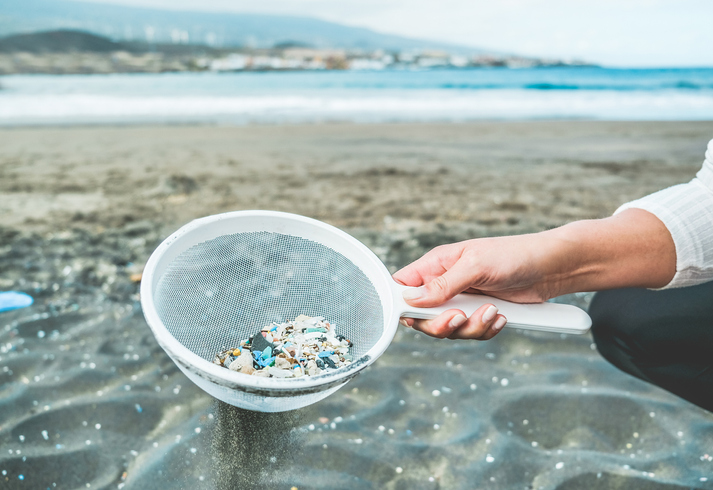
June 8, 2022, by lizst4
World Oceans Day
World Oceans Day
Today, 8 June, is the United Nations World Oceans Day 2022 where we have the chance to reflect on the major role the oceans have in our everyday lives. It is also an opportunity to consider the impact we have on the ocean, and to mobilise and unite the global population for the sustainable management of the world’s oceans.
The ocean covers over 70% of the planet and is home to most of the earth’s biodiversity. It produces at least 50% of the planet’s oxygen and absorbs approximately 30% of the carbon dioxide produced by humans – buffering the impacts of global warming. The ocean is also key to our economy, with an estimated 40 million people to be employed by ocean-based industries by 2030. In short, the ocean connects, sustains, and supports us all. Yet, its health is at a tipping point and so is the wellbeing of all that depends on it.
Collective Action for the Ocean
The theme of this year’s World Oceans Day is ‘Collective Action for the Ocean’. A fitting time then to reflect on our own individual and collective actions towards the ocean. Some actions are obvious – more and more of us are reducing our plastic waste with the hope that less of it ends up in the ocean, and we are becoming more conscious of our fish consumption. But, some of our impacts on the ocean, and potential remedial action for this, may be less obvious – take the case of microfibres, for example.
Microfibres report
A recent report by First Sentier Investors highlights how microfibres from textiles have been found in rivers, the deep ocean, on beaches and in the atmosphere, as well as in animals, plants and human food. Fibre fragmentation or ‘microfibres’ are microscopic fibres that can enter the environment during textile manufacturing and maintenance processes, such as domestic washing and drying of clothes. All natural, synthetic and semi-synthetic textiles shed microfibres, the most commonly known currently being microplastics. The report outlines that the amount of synthetic microfibres alone accumulated in the environment is so far thought to exceed 5.6 million metric tonnes.
Once in the environment, the microfibres concentrate pervasive bacteria and pollutants. When consumed by aquatic organisms, they can cause gastrointestinal infections and blockages, reproductive problems and starvation, eventually moving up the food chain and contaminating human food and threatening our health.
The First Sentier report describes how microfibres have been found in bottled and tap water, beer, salt, shellfish, fish, birds, vegetables, and fruit. With humans estimated to consume or inhale between 75-120 thousand microfibre particles per year as a result – roughly equivalent to a paper clip’s worth of microfibres. Recent articles in The Guardian have also outlined how microplastics have been found in human blood and lungs for the first time, as well as in the placentas of unborn babies. The exact impact of this on health is as yet unknown, but researchers believe microplastics can cause damage to human cells, and may be linked to inflammatory bowel disease, as well as long-term damage to foetuses. Thus, rapidly making microfibres in general a serious environmental and health concern.
So where do you come into this and what action can you take?
At a basic level we can all pay closer attention to our laundry habits. Estimates of the number (and volume) of microfibres released with every load of laundry varies widely, from 700,000 to 7 million fibres, but it is believed that 0.12-1.07 million metric tonnes of natural and synthetic microfibres could be released from laundering every year (First Sentier, 2021). Here are some practical things that you can do to help prevent this:
- Buy a microfibre filter bag: While the regulation of textile shedding rates may still be on the distant horizon, microfibre capture technologies during laundry already exist and are affordable for everyday consumers. One such example is microfibre filter bags – easily bought at local eco stores – where clothes are placed in a separate bag in the washing machine, with the aim of capturing microfibres in the washing process and preventing them from getting into our waterways. Then of course, the microfibres need to be disposed of carefully in the bin rather than being washed down the sink.
- Buy a washing machine with a fitted microfibre filter: The world’s first integrated microfibre filter machine is now commercially available in the UK. Emerging evidence suggests that washing machine filters deployed in homes can be an effective solution to prevent microfibre emissions. As a result, several investors such as First Sentier are engaging with machine manufacturers currently about the introduction of such filters in their products, as they recognise the environmental, social and governance (ESG) risks associated with microfibres, and the potential effects to their investment portfolios.
- Write to your MP to support the Microplastic Filters Bill: The Microplastic Filters (Washing Machines) Bill was tabled in November 2021 in the UK House of Commons, which if passed into law would require washing machine manufacturers to fit microplastic-catching filters to new domestic and commercial washing machines. Writing to your local MP to ask for their support for the bill can help expedite this process.
On this World Oceans Day let’s all think twice about what we wear and how we wash it!
Dr Niamh O’Sullivan, Assistant Professor of Sustainable Business, the International Centre for Corporate Social Responsibility (ICCSR), and Will Oulton, Head of Responsible Investment, First Sentier, and Honorary Associate Professor, ICCSR, Nottingham University Business School.
No comments yet, fill out a comment to be the first

Leave a Reply